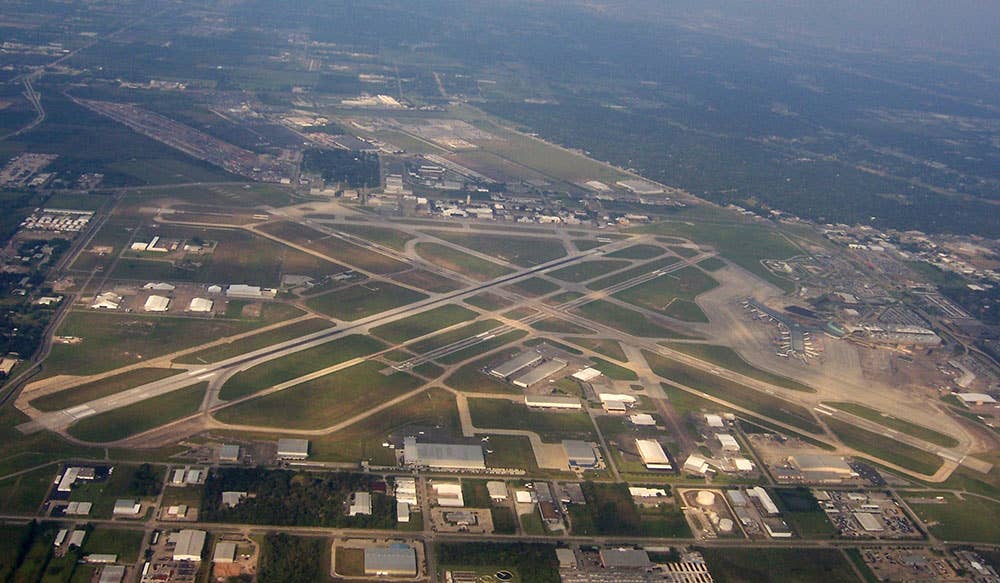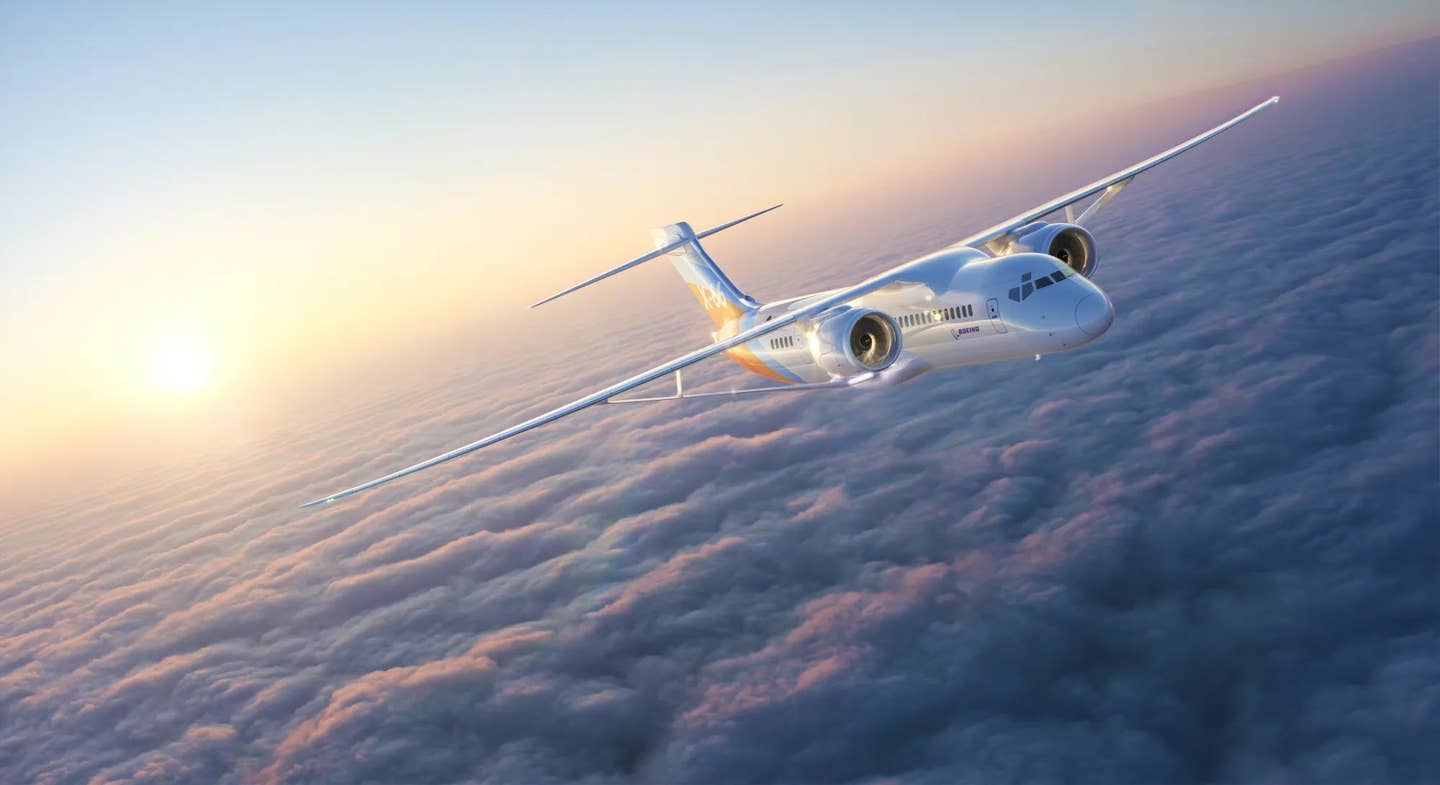Examining Loss of Control in a Cirrus SR20
A go-around from a full-flap approach is a delicate maneuver that pilots are seldom called upon to perform.

In June 2016, a Cirrus SR20 flying from Norman, Oklahoma, lost control near William P. Hobby Airport, killing the three people on board. Wikimedia Commons
Presumably because of its convenient location, it was to busy William P. Hobby, of the 15 airports in the Houston area, that a Cirrus SR20 flew from Norman, Oklahoma, on a June day in 2016. The private pilot, 46, her husband and her brother-in-law were going to visit a relative who was receiving cancer treatment at a Houston hospital.
They arrived early in the afternoon. The wind was out of the east at 12 to 15 knots. The airport was busy, with a string of jets, mostly Southwest 737s, on the approach to Runway 4. Approach control sequenced the Cirrus for a left base entry to the Runway 4 pattern, following a 737 on a 4-mile final, and issued the customary warning about wake turbulence. Handed off to the local controller, the Cirrus was cleared to land. But a second 737, now 9 miles out, was rapidly overtaking it, and the tower controller instructed the Cirrus to go around, maintaining runway heading, and then make a right turn onto a right downwind leg for Runway 35.
The Cirrus was supposed to pass behind and above a third 737 on final for Runway 4, but the controller believed there might be a conflict and told the pilot to “turn left heading 30 degrees.” Probably this meant “turn left 30 degrees,” but the Cirrus pilot obediently began a left turn to a heading of 030. Almost immediately, the controller proposed a new plan: Follow the 737 to Runway 4. “That would be great,” the pilot said.
At this point, however, the Cirrus, although cleared to land on Runway 4, was still in a left turn. “So, I am turning a right base now?” the pilot asked. Growing somewhat exasperated that the Cirrus was now heading about 120 degrees and away from Runway 4, the controller said, “Just maneuver back for the straight-in, I don’t know which way you’re going now so just turn back around to Runway 35.” He urged her to “keep the turn tight.”
The pilot overshot the Runway 35 centerline but headed back toward it. The controller cleared her to land on Runway 35. She acknowledged the clearance, adding, “but I don’t believe I’m lined up for that.” She was, in fact, about a mile out and somewhat to the left of centerline, but could easily have lined up for Runway 35. Instead, however, the controller, evidently taking her comment as a rejection of the landing clearance, instructed her to climb to 1,600 feet (the airport elevation is 46 feet) and make a right turn “all the way around.” Again, he cleared her to land on Runway 35.
After completing the 360-degree turn, the Cirrus was in the same position as before, but higher up. The pilot could not get down rapidly enough and had to go around a second time. She again flew a right-hand pattern for 35, but again approached the runway too high and could not get down in time to land.
A new tower controller now took over the position. Perhaps thinking that the gusty right crosswind was somehow connected with the pilot’s problems, he instructed her to turn left, keep it low and tight, and enter a left downwind for Runway 4. But, he added, if there proved to be a traffic conflict on Runway 4—yet another 737 was inbound—he might bring her back around to Runway 35.
As the controller was speaking, the Cirrus began a climbing turn to the left. Suddenly, a wing dropped. “Ma’am, ma’am, straighten up, straighten up!” the controller exclaimed, but in vain. The Cirrus, spinning, fell into a parking lot just outside the airport, killing all three aboard.
The immediate reason for the loss of control was that the pilot retracted the flaps at an indicated airspeed of 60 knots. The flaps-up stalling speed of the SR20 in a 15-degree bank is between 70 and 75 kias; it was bound to stall as soon as the flaps began to move.
The cause of the accident, the National Transportation Safety Board stated, was the pilot’s failure to establish a safe flaps-up climbing speed before retracting the flaps. It added several contributing factors: the first tower controller’s decision to keep the pilot in the traffic pattern (as opposed to handing her off to approach control to start over again); the second controller’s long and somewhat confusing clearance; and, finally, “the pilot’s lack of assertiveness.”
A somewhat abridged audio recording of communications can be found on YouTube. The pilot is unfailingly polite, composed and calm. She reads back clearances accurately, requests clarification when she needs to and does not appear to become flustered during the 18-minute-long attempt to land. I don’t know what the NTSB thinks she should have been more assertive about; perhaps they thought she should have been a man.
The first tower controller seemed to become frustrated with the pilot, particularly after he instructed her to turn to a heading of 30 degrees.
I don’t understand this instruction, nor why he had her climb to 1,600 feet. The sense I get from the long set of instructions issued by the second controller, which did not conform to standard radio protocol but instead had a colloquial, avuncular tone, is that he was aware that the pilot was having problems, supposed she must be rattled, and thought he ought to be easygoing and informal. It’s possible that his long speech distracted her, but at the moment of the stall the pilot actually had nothing to do but fly the airplane; he was not imposing any new tasks on her.
The real problem, I think, was one of airmanship. The accident report does not disclose the pilot’s experience level, but she had gotten her private license two years earlier. Her biannual flight review was out of date by a month — a discrepancy only a bureaucrat could love. Instructors who had worked with her said she was capable and did not get rattled in stressful situations. But the onboard flight data recorder suggests imperfect control of airspeed and altitude. In one instance, she selected full flap at 130 kias, ballooned upward and did not begin to descend until 40 seconds later. She seemed unable to manage her approaches in such a way that she was ready to touch down somewhere in the first half of the runway. The forward slip — an almost magical way to lose altitude — was evidently not in her repertory.
On the first of the three occasions on which she used flaps and then had to go around, she began to retract them at 76 kias; on the second, at 69 kias; on the third, at 62. The recommended go-around procedure in the SR20 is to accelerate to 81 to 83 kias before raising the flaps. On the third occasion, she began her go-around with full power, but reduced power to 80 percent at the same time as she began to retract the flaps. In principle, because full flap is a very draggy configuration, full power should be used and the airplane kept level or, in VMC, even allowed to sink, until reaching climbing speed. The first priority is to gain speed, not height.
A point that the NTSB does not mention is that a go-around from a full-flap approach is a delicate maneuver that pilots are seldom called upon to perform. A pilot making an instrument approach to minimums avoids using full flap, until landing is assured, for that very reason. It is quite possible that since her training, the pilot of the Cirrus had never had to perform such a go-around, and now, suddenly, she was given not one but three chances to fail.
This article is based on the NTSB’s report of this accident and is intended to bring the issues raised to our readers’ attention. It is not intended to judge nor to reach any definitive conclusions about the ability or capacity of any person, living or dead, or any aircraft or accessory.

Sign-up for newsletters & special offers!
Get the latest FLYING stories & special offers delivered directly to your inbox






